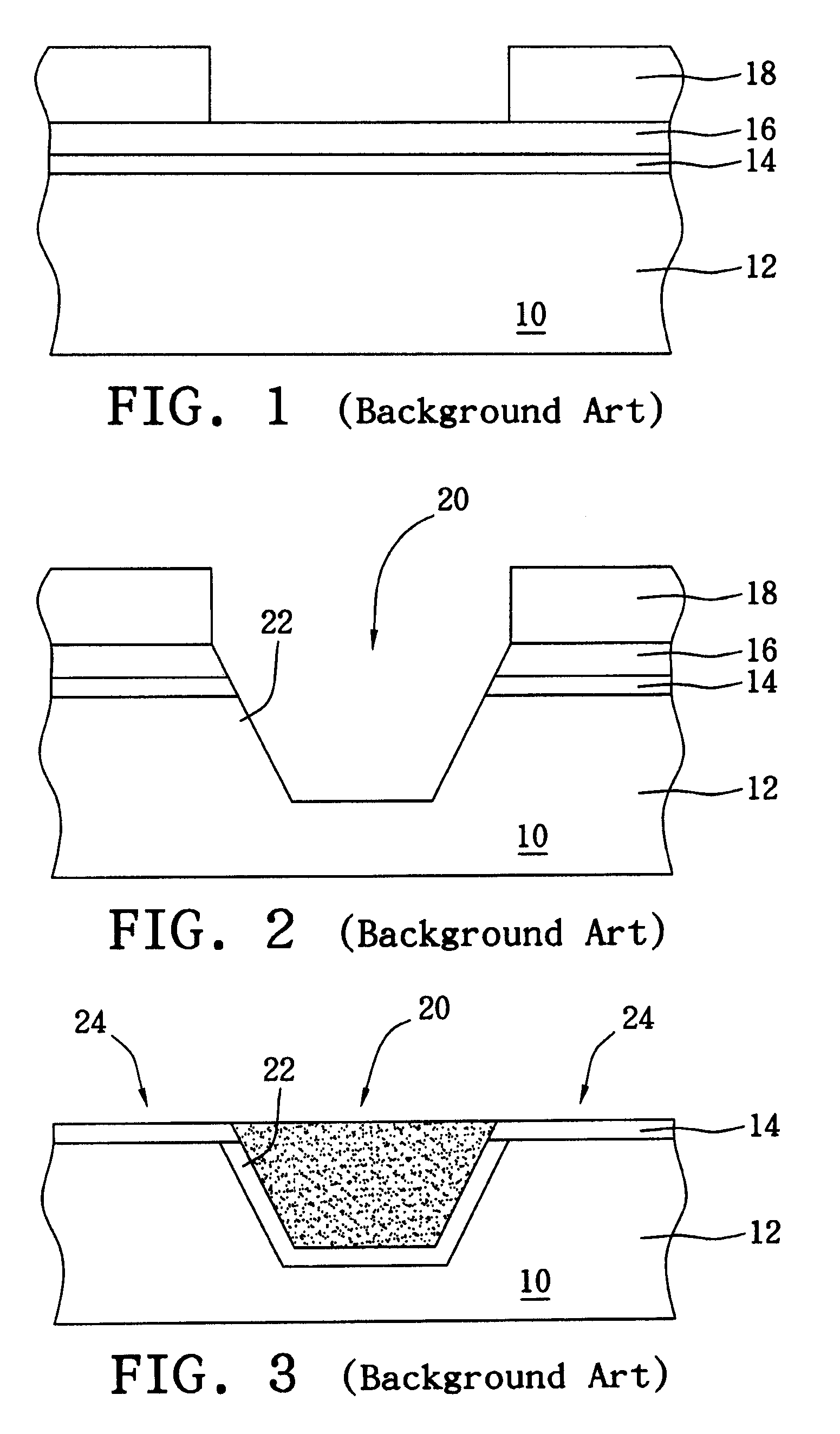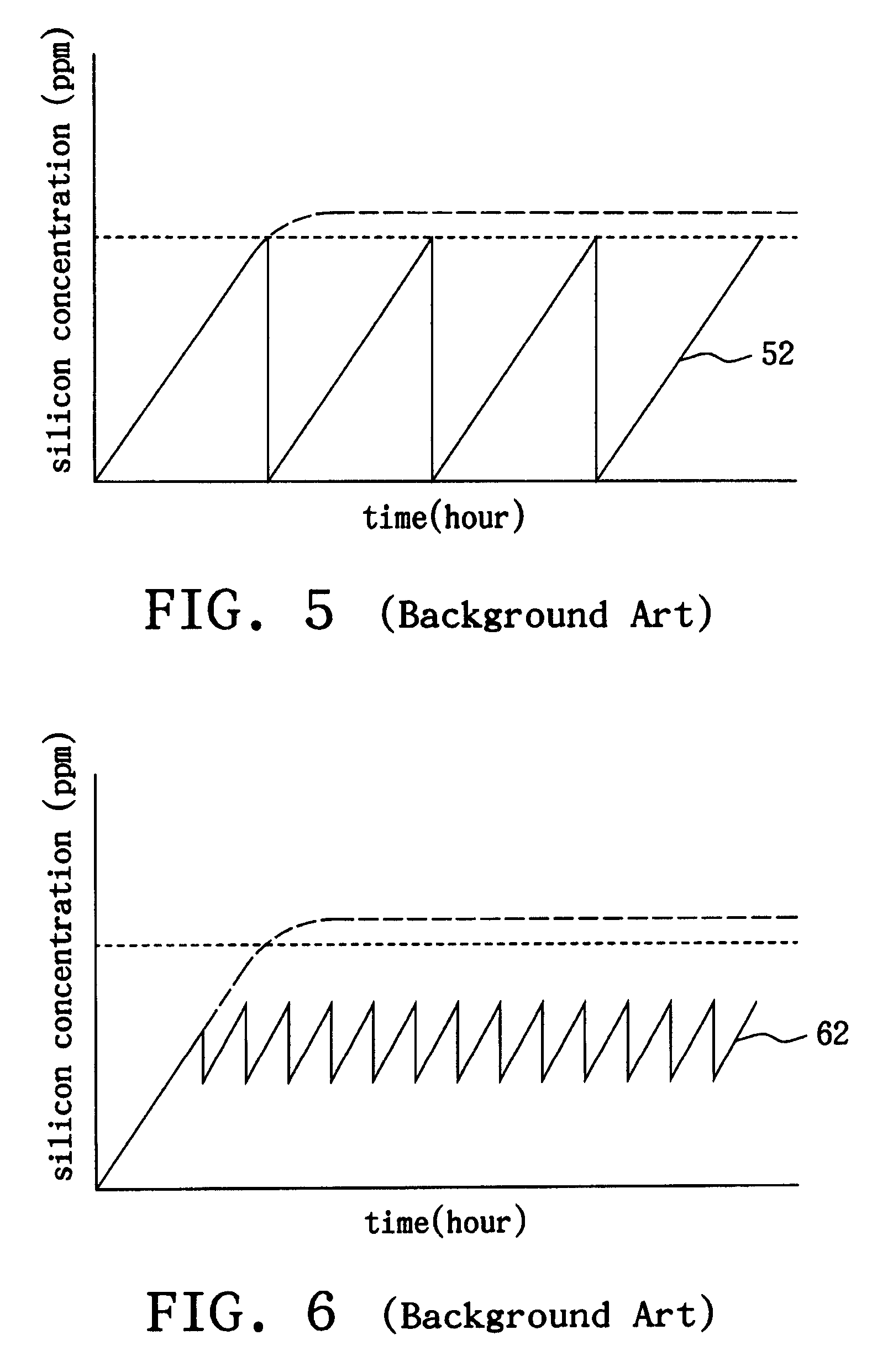Method for Treating an Etching Solution
a technology of etching solution and etching solution, which is applied in the direction of decorative surface effects, electrical equipment, decorative arts, etc., can solve the problems of increasing the difficulty in controlling process parameters, affecting the stability of etching selectivity, and affecting the quality of etching, etc., to achieve stable etching selectivity and reduce the cost of the etching process. dramatic
- Summary
- Abstract
- Description
- Claims
- Application Information
AI Technical Summary
Benefits of technology
Problems solved by technology
Method used
Image
Examples
Embodiment Construction
[0027]FIG. 7 shows the relation between the silicon concentration and both the etching rate and silicon particle concentration in the etching solution. Curve 72 represents the etching curve of silicon nitride, curve 74 represents the etching curve of silicon oxide, and curve 76 is a variation curve of the silicon particle concentration. As shown in FIG. 7, the etching rate of silicon nitride is substantially not influenced by the silicon concentration virtually and is fixed at about 90 Å / min. In contrary, the etching rate of silicon oxide reduces as the silicon concentration increases, and is fixed at about 0.2 Å / min as the silicon concentration is above 100 ppm. When the silicon concentration is above 100 ppm, the silicon particle concentration of the etching solution increases as the silicon concentration increases.
[0028]FIG. 8 shows the relation between the silicon saturation concentration of the etching solution (i.e. the solubility of silicon in the etching solution) and the t...
PUM
| Property | Measurement | Unit |
|---|---|---|
| temperature | aaaaa | aaaaa |
| temperature | aaaaa | aaaaa |
| temperature | aaaaa | aaaaa |
Abstract
Description
Claims
Application Information
 Login to View More
Login to View More - R&D
- Intellectual Property
- Life Sciences
- Materials
- Tech Scout
- Unparalleled Data Quality
- Higher Quality Content
- 60% Fewer Hallucinations
Browse by: Latest US Patents, China's latest patents, Technical Efficacy Thesaurus, Application Domain, Technology Topic, Popular Technical Reports.
© 2025 PatSnap. All rights reserved.Legal|Privacy policy|Modern Slavery Act Transparency Statement|Sitemap|About US| Contact US: help@patsnap.com



